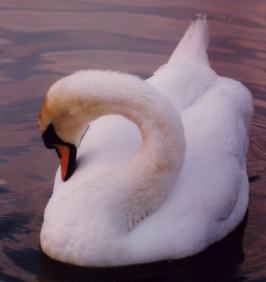Wandering
Jean Marc Nuzillard writes:
The example that is provided by Carlos in his blog would benefit from a processing trick I use when there is no multiplet superimposition:
I simply integrate the multiplets that are recorded at different gradient intensities and I perform a monoexponential fit on integral values.
I suspect the noise on integral values is lower than the one in individual columns of the 1D spectra set, thus making D values more accurate.
Bye bye butterflies. This idea is absolutely trivial but maybe it would be interesting
to implement it.
I agree with the idea. Actually I had arrived at the same conclusion for a different reason. Look at this spectrum (a DOSY after FT):
 The signal/noise ratio is low yet acceptable, the compound is pure, the decay mono-exponential. No concern about phase and baseline. Alas, this peak is too nasty for my tastes. The frequency is not constant over time. The "trivial" trick by Jean-Marc should work. I give my preference to binning, because the output of binning is not a numerical table (like with integration) but a new spectrum, so the same NMR program can be used for the subsequent exponential fit.
The signal/noise ratio is low yet acceptable, the compound is pure, the decay mono-exponential. No concern about phase and baseline. Alas, this peak is too nasty for my tastes. The frequency is not constant over time. The "trivial" trick by Jean-Marc should work. I give my preference to binning, because the output of binning is not a numerical table (like with integration) but a new spectrum, so the same NMR program can be used for the subsequent exponential fit. Before Carlos corrects me, let me stress a few details. We have processed the same experiment with two different algorithms. I got the butterflies and I am not proud of it. Carlos' pictures are a little smaller and cannot be compared:
 (taken from his blog). Anyway, we are really confusing the matter here. From what I understand, the purpose of Carlos was to show how Bayesian DOSY can effectively separate the components of a mixture. I can't express any opinion, because as I said I only have two experiments to work with. In both cases there is no superposition of peaks, therefore there is nothing to separate. I normally like simple examples like these, yet I acknowledge they are not enough.
(taken from his blog). Anyway, we are really confusing the matter here. From what I understand, the purpose of Carlos was to show how Bayesian DOSY can effectively separate the components of a mixture. I can't express any opinion, because as I said I only have two experiments to work with. In both cases there is no superposition of peaks, therefore there is nothing to separate. I normally like simple examples like these, yet I acknowledge they are not enough.Today I could repeat the same processing of Carlos, because he himself has very kindly given me both the raw data and the software. But 1) I am not terribly interested into this comparison 2) He doesn't give me these things for free for me to criticize him 3) If I really want to do such a thing I'll post a comment directly on his blog.
Now let's go on: ho to make the butterflies go away? The next post shows how to transform a butterfly into bull's-eyes.

1 Comments:
I considered to compute peak integrals because I also observed that DOSY data processing is highly sensitive to peak wandering.
To be honest, collecting good quality DOSY data is certainly more difficult than processing them.
All the processing tricks, like smoothing (your next post), are only there to remind us that our data are bad.
Post a Comment
<< Home